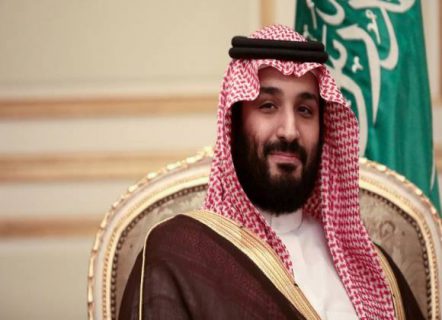Ending the Saudi Purge

Why did Muhammad Bin-Salman wind up his anti-corruption commission?
The Saudi Royal Court announced last week that the commission formed to investigate corruption cases, headed by Crown Prince Muhammad Bin-Salman, had completed its task after recovering 400 million riyals ($100 million) worth of assets, shares, real estate and cash deposits.
The royal statement revealed, for the first time, that the number of princes and businessmen detained since the campaign began in November 2017 totalled 381. The cases of 87 of them were closed after they admitted to the charges made against them and agreed to settle, eight of them rejected the accusations, and 56 were still detained by the public prosecutor for investigation about issues not related to corruption.
The US news agency Bloomberg said all the detainees who were released remain barred form travelling abroad. Most prominent of these are the billionaire Prince Alwaleed Bin-Talal — whose fortune is said to have shrunk from $19 billion to $15 billion — and the second richest of the detainees Muhammad al-Amoudi — assets reportedly reduced from $8.7 billion to $1.7 billion. He was freed with the mediation and intercession of Ethiopia, his country of origin where he has big investments.
It was striking that the statement did not reveal the names of the princes and businessmen who rejected the corruption charges levelled against them and refused to settle. Nor did it explain the nature of the non-financial criminal charges facing the 56 people referred to the public prosecutor for investigation. They are thought to include Prince Khaled Bin-Talal, who was released for a few days to attend his father’s funeral and then taken back into detention.
It is still unclear why the statement announcing the conclusion of the commission’s work was released. Experts and observers of the Saudi scene suggest six main reasons.
– First, the real targets of Muhammad Bin-Salman were his political opponents, and his campaign achieved both its political and financial objectives in this regard. It succeeded in sullying most of their reputations by branding them as corrupt, and it stripped them of a total of $100 billion of their money, which was supposedly transferred to the Saudi treasury.
-Second, the campaign succeeded in bringing all of Saudi Arabia’s quasi-private media empires under the control of the state, and specifically of Bin-Salman. These include the al-Hayat group, the giant MBC network, millionaire Saleh Kamel’s TV stations, and the Rotana channels owned by Alwaleed Bin-Talal, who praised Muhammad Bin-Salman and his anti-corruption drive after he was released.
– Third, the need to reassure investors inside and outside the Saudi Arabia, who had mostly held back from investing in the kingdom for fear of meeting the same fate – i.e. to be arrested at the stroke of a pen with no recourse to any judiciary. Bin-Salman desperately needs investment for his new projects such as Neom City. This reluctance to invest was clearly evident at the so-called ‘Davos in the Desert’ investment conference held in the kingdom in November. Most Western finance ministers and top company executives boycotted the event.
– Fourth: The use of political connections to obtain business has been curtailed, and confined for the future exclusively to the small group that enjoys the trust of the Saudi crown prince. This explains the bankruptcy or near-bankruptcy of giant Saudi conglomerates such as the Bin-Laden Group and the Hariri family’s Saudi Oger.
– Fifth, it was an attempt to offset the enormous damage done to Bin-Salman by the murder of journalist Jamal Khashoggi and its impact on his image both at home and abroad, and also to counter Western public and media criticism of the detention of Saudi human rights activists, both male and female. There is a belief that the Saudi monarch may proclaim a pardon for most if not all of these people in the next few days or weeks to try to reduce if not put an end to that criticism.
– Sixth: Several observers have noted that Muhammad Bin-Salman has maintained a relatively low public profile in recent weeks, in comparison to the period after he assumed control of the state and the position of crown prince. His media appearances have become much rarer. Some link this to reports that his previous enthusiasm for the ‘Deal of the Century’ – promoted by Donald Trump’s son-in-law Jared Kushner – has waned. The open Saudi advocates of normalisation with Israel, such as Prince Turki al-Faisal and Anwar Eshqi, have also quietened down, after an intensive round of media appearances that could only have happened with the government’s blessing.
The pressing question is whether steps such as these, winding up the anti-corruption commission and releasing most of the detainees, will produce the desired results? Will they help ease the pressure on Muhammad Bin-Salman, and bring capital and investment back to the kingdom and up to previous levels, before the Ritz Carlton wave of arrests?
The other question stemming from the above is whether the ending of the corruption probe means corruption has been fundamentally eradicated, and won’t persist in future in other forms and featuring other ‘stars’.
It is hard to offer categorical answers to either of those questions, because the anti-corruption campaign – which to start with was quite popular among Saudi youth – has not provided any convincing alternatives. It did not help ease these youths’ worsening living conditions, nor revived the economy as hoped.
Some might argue that it is premature to make such judgements, as it is only a few days since the anti-corruption commission was terminated and the cases of most of the accused closed. That is a reasonable argument. But there is not much to indicate otherwise, or to inspire much hope.
 TheAltWorld
TheAltWorld 
0 thoughts on “Ending the Saudi Purge”